Overlock sewing machines
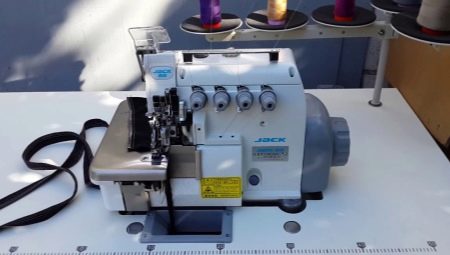
An overlock sewing machine is a kind of compromise option for home appliances that allows you to produce more beautiful and neat overcasting of fabric edges. The additional function allows you to dispense with the purchase of additional and rather bulky equipment. But before choosing a machine with an imitation of an overlock seam for a home, it is worth weighing all the pros and cons. After all, such equipment is still not able to completely replace the overcasting technique. Let's figure out how to choose a car with an overlock function for your home.


What is an overlock in a sewing machine?
Understanding what an overlock is in a sewing machine is quite simple. This is just an additional type of seam, with which you can modify the usual zigzag, get rid of the tightening of the edges of the matter. A rather simple function is good in that it allows you to quickly and efficiently overcast an edge without resorting to the use of additional devices. You just have to change the foot and fill in the fabric correctly. The ranking of the best models will help to understand and make a decision on the choice, with which you can easily navigate the best offers on the sewing equipment market.

Sewing machines capable of overlock stitching usually have a special presser foot in the kit. It differs in its design from standard products, prevents folding of the edge of the fabric during processing. In addition, the 2-in-1 machine must support the overlock function. In its absence, even the presence of a foot will not force the technique to form an even and neat edge seam.
If the pressure piece is purchased separately, it may require an adapter attachment or adapter to fit a specific machine model.

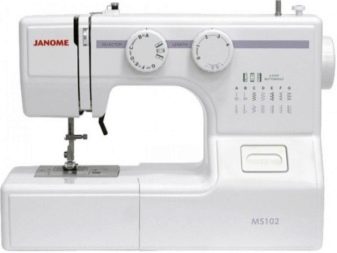
The simulated overlock seam can be open - it is used when sewing and overcasting elastic materials, overcasting. Such a line is designated as a one-sided herringbone. The imitation of a closed overlock seam has straight lines along the edges, inside which the overcast is located - this can be seen even by the way the icon looks in the machine menu. The purpose of this stitch is to hem thick fabrics like jersey.
Of course, a full-fledged overlock in a sewing machine is not provided by its design. Moreover, even the type of stitching differs. The sewing machine has a shuttle, and the overlock has an overlock, consisting of 2, 3, 4 or 5 threads. In fact, the edge processing still remains zigzag, although it has a different name.

Advantages and disadvantages
Among the obvious advantages of using overlock sewing machines, the following can be noted.
- A noticeable simplification of the processing of edges on knitwear, delicate materials.
- The presence of a guide that prevents twisting or contraction of the edge.
- The ability to sew straight along the cut.
- Ease of replacement. You can use the foot as needed.
- Fast adaptation - no complicated settings needed.
- The presence of a guide that ensures the preservation of the line in the specified geometric parameters.
- High quality decorative finishing stitching. Can be used if provided by the model of clothing or other product.
- The ability to make a better blind hem of the cut.

It would seem why an overlock is needed at all, if the machine copes with all these functions when working in overcasting mode. In fact, such a line should be considered exclusively as an element of decorative trim. Unlike the overlock seam, it does not carry a functional load. If the fabric is pulled too tight, the threads will break.
The decorative imitation of the overlock stitching does not protect the edge from shedding in its open design. If you need to prevent this problem, it is worth making sure that you can make a closed suture. You will also have to trim the excess fabric manually. Another notable disadvantage: one foot is not enough to sew an overlock seam - the machine must support this function.


Views
Sewing machines with a built-in overlock can belong to different classes and types of equipment. The simplest division is by purpose.
- Household. They have a shuttle type of stitch formation, and any overlock stitches are performed according to the zigzag principle. Even models with an overlock seam function only imitate it. They are mechanical, electromechanical, they can sweep loops in a semi-automatic mode.
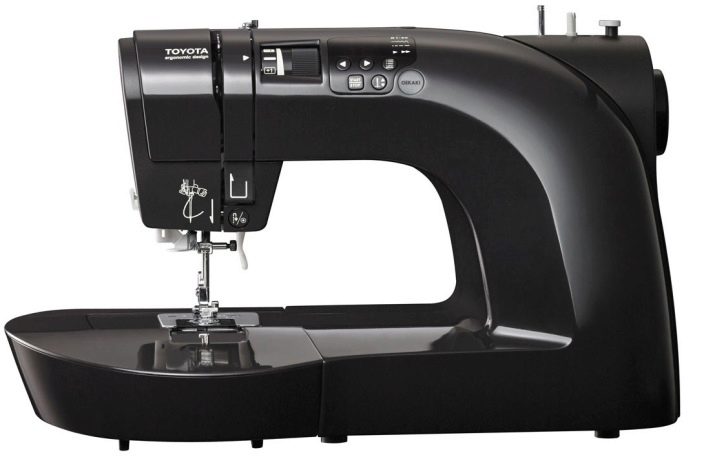
- Professional. They have a computer control module and are capable of performing several hundred operations, including overcasting seams of varying complexity. The stitching can be more complex, decorative, "with an eye", the loops are formed automatically. It is the ideal solution for inline sewing of a wide variety of products or non-elastic materials.

- Industrial. This is a highly specialized category of equipment focused on the in-line execution of 1 type of operation. With lockstitch, overlock stitching is only found on zigzag machines.

- Coverlocks. They combine the functions of an overlock, a cover-stitch machine and create a full-fledged elastic stitch not only along the edge of the fabric, but also on any part of the fabric or product. The optimal solution for those who constantly work with knitwear. These machines sew a chain stitch, not a lock stitch.

Depending on the type of machine, its functionality, performance, and the recommended operating mode also change. All this should be taken into account when choosing equipment.
Rating of the best models
It is not difficult to understand which sewing machines with an overlock (decorative overcasting function) are considered the best if you pay attention to user reviews.Among the popular and demanded options, you can find equipment for every taste. - with an electromechanical structure, electronic, computer control.

The most versatile
In this category there are machines with overlock, able to easily replace many other devices.
- AstraLux 7350 Pro. Powerful and reliable technology for cutting and sewing professionals. This machine can sew up to 500 types of stitches, adapted to work with knitted and elastic materials. The model is suitable for stitching complex fur or lace trimming, decorative hemming.
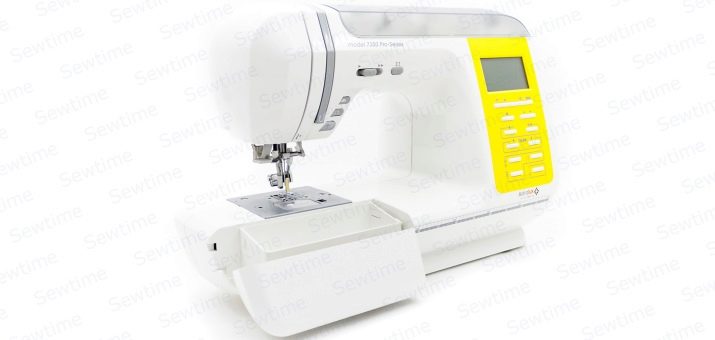
- Bernina B 750 QE. Model with expandable functionality, can be connected to a PC for additional downloads of programs and applications. A total of 330 operations are available, of which 11 types of loops. Allows you to create various imitation overlock stitches, software control eliminates the possibility of errors.

Electronic household models
Here are sewing machines with overlock function, equipped with an electronic microprocessor. The following models are among the leaders of the rating.
- Janome Exact Quilt 60. One of the best cars in its class. Includes LCD information display. Suitable not only for straight and overlock sewing, but also for embroidery, patchwork, quilting. A good compromise for seamstresses with average experience.

- Brother SM-340 E. Popular model with automatic execution of all operations. A simple and convenient solution for all cutting and sewing lovers. The model is designed for 40 basic operations, including overcasting with an overlock seam. Differs in quiet operation of mechanisms at high power.
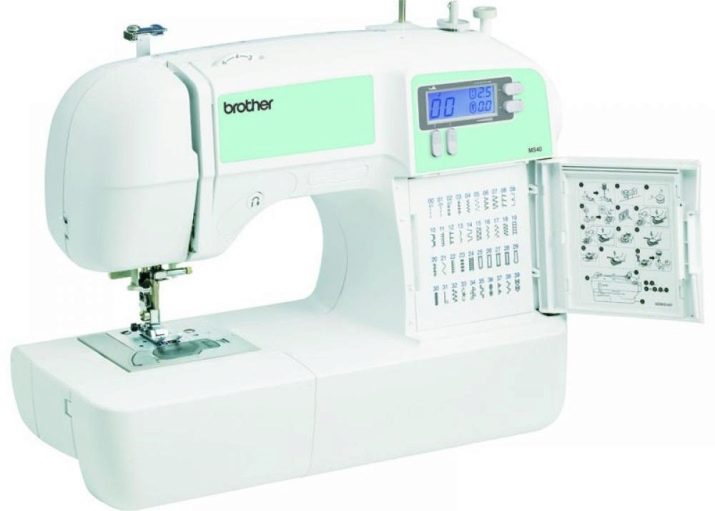
- Janome DC 4030. Universal machine for amateurs and professionals. Suitable even for sewing complex products, equipped with an information display, there are 30 available operations. Includes overlock foot, which is required when the machine is in overcasting mode.
Smoothness adjustment allows sewing without a pedal.

Electromechanical engineering
These machines are rarely capable of performing more than 20 operations, they are as close as possible to their classic versions. Among those models that can perform an overlock stitch, these are considered the most popular.
- Brother LS-2125. Basic model for beginners. Supports 14 types of different operations, buttonholes are sewn in semi-automatic mode. The overlock seam is neat, but does not prevent material from shedding along the edge.

- Janome JK 220 S. A machine for the enthusiastic seamstress. There are 23 operations, there is an imitation of an overlock stitch, an overcasting foot is already included in the basic set.

- Aurora 7050. Reliable electromechanical sewing machine that supports overlock seams. Suitable for working with materials of different types and densities. The best choice if you need to get a versatile tool for home sewing.

How to choose?
When choosing sewing equipment for the home, you must definitely decide on the functional equipment of the equipment. Overlock machines are suitable for beginners and allow you to master the basic operations of overcasting the edges of the product without tightening and creasing. Besides, this technique for home use is indispensable when sewing elastic materials.
Accordingly, a model with an overlock is definitely needed for knitwear, sewing children's clothes and other small items.

Among the main criteria for choosing a sewing machine with an overlock are the following.
- Functionality. If you need not just a basic machine that can make straight or zigzag stitches, but a full-fledged machine for darning, embroidery, overcasting, hemming, you should immediately give preference to a model that is capable of performing all these operations. As a rule, the overlock foot in this technique is already included in the package, and you do not need to buy it separately or look for an adapter.
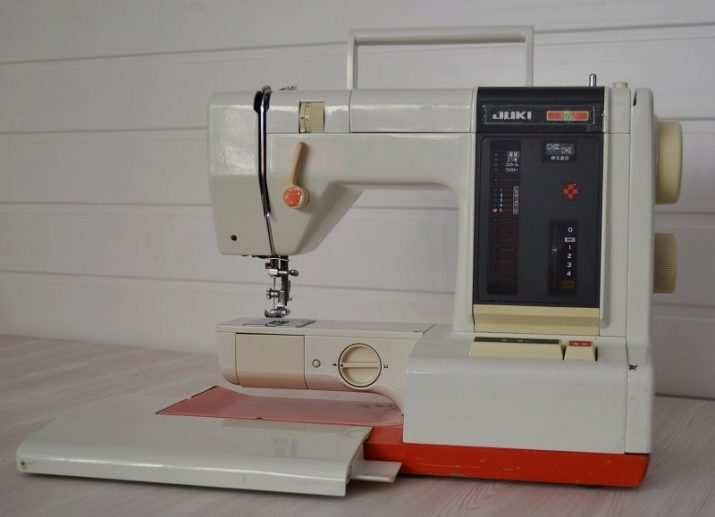
- Power. It directly affects not only the sewing speed, but also the possibility of piercing thick or multi-layered fabrics with a needle. Most household machines are adapted to work with thin and medium-dense fabrics. They have a small foot lift, not enough power to sew drapes, felt or jeans. Whereas it is these fabrics that most often require overlock hemming.

- Manufacturer. There is a list of brands that are trusted by both amateurs and professionals - these are Singer, Janome, Minerva, Pfaff, Husqvarna, Brother. It is easy to pick up accessories and components for them, find parts in case of breakdown. Overlock machines are also produced by little-known firms. But in the event of a breakdown, it can be quite difficult to find a service center, and the components may have non-standard sizes.

- Machine type. Professional equipment with imitation of an overlock seam is unreasonably expensive for domestic use. It will be much easier to immediately choose a suitable household variety. It can be electromechanical, computer controlled, or embroidery. It is optimal if the design immediately contains a device that simulates an overlock knife for cutting fabric.

- Volume of work. If we are talking about full-fledged work on an in-line basis - tailoring to order, making knitwear, it is better to immediately abandon the idea of buying a machine with an overlock and choose a full-fledged overcasting technique. It is its capabilities that will be enough to ensure the creation of elastic stitches of the required strength.
For small volumes of work, an overlock will become an unjustified waste, it is better to give preference to conventional machines with support for the desired function.

How to use?
In order for the machine to start overcasting the seam with an overlock stitch, and not just making a regular zig-zag, you need to properly tuck the foot into the mount. The plate should be positioned so that there is an edge under it that needs to be protected from twisting... Next, you should check whether the needle hits the foot, or free play is maintained.
If movement is difficult, move the needle bar to the side so that you can sew without interference.

Standard sewing parameters in a typewriter: "zigzag" or "overlock" - they are set manually or set by the program. Thread tension indicators should be in the range of 1-4, stitch width from 4 to 6 mm, length 1-2 mm. After that, you can lay the material on the working surface of the machine so that its edge abuts against the limit plate, and start over-laying. It is important to note that after overcasting the edge, you will have to secure the result with a straight stitch at the base of the overlock seam.

Review of the Michley LSS FHSM 505 overlock sewing machine in the video.








